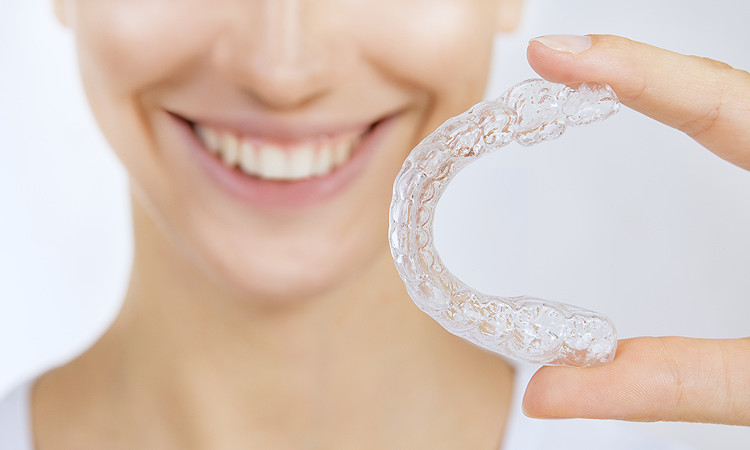
There are a number of different teeth straightening options available including fixed, ceramic, lingual and removable appliances. Nowadays, many people opt for invisible or hidden braces to adjust their teeth without others noticing they are even wearing braces.
Advances in cosmetic dentistry have introduced a variety of different options and you may feel confused by which treatment is right for you. Lingual braces and Invisalign are two of the most common teeth straightening procedures.
What are Lingual Braces?
Braces apply a continuous, gentle pressure to your teeth to help them move into a straighter position. Lingual braces are metal attachments which are secured to the backs of your teeth with a special glue. They fit to the inside surface of your teeth and can be fitted in a single visit. A special wire is then gently inserted through these attachments which puts pressure on the teeth to gently move them into a straight formation.
What is Invisalign?
Invisalign braces are clear moulds that straighten your teeth by acting as aligners. They are made by an orthodontist taking a mould of your teeth which is then sent to an Invisalign lab. During Invisalign treatment you will receive a new clear brace every two weeks which will gently move your teeth into a straighter position.
Who are lingual braces for and what are the benefits?
Lingual braces are suitable for both adults and teenagers. They are particularly suited to you if your tooth movement is mainly in the front of your mouth. There are a number of benefits to lingual braces. Many people decide to choose lingual braces because they are invisible, which means you can have orthodontic treatment carried out without anyone knowing. This might be particularly important to you if you work in a public-facing job such as a teacher.
Lingual braces work quickly with many people seeing results in just 6 weeks and some people only need 16 weeks to fully straighten their teeth. Lingual braces might also suit you better as you require fewer dental trips. Due to their design the wires do not need to be tightened which allows you to get on with your life and let the brace do the work.
Why would you choose Invisalign?
Invisalign may be the perfect orthodontic choice for you if you have had previous orthodontic treatment (such as a fitted brace) but have since failed to wear a retainer and have experienced some relapse. You might favour Invisalign treatment as you can remove the aligners to brush your teeth and eat, which can help stop the growth of tooth decay. For Invisalign to work properly they need to be worn 22/23 hours out of 24.
It is important that before you decide on one orthodontic procedure to consider what you need the brace to do. Invaslign is ideally meant for minor alteration to crowding and alignment. Lingual braces take more getting used to and can initially affect your speech and feel rough.
Orthodontics at Number 18 Dental Dentist in Notting Hill
Ultimately if you are unhappy with your smile, the best thing you can do is visit your dentist who can offer you the best solutions for the results you want. At Number 18 Dental, dentist in Notting Hill we have a range of cosmetic dentistry treatments available.
